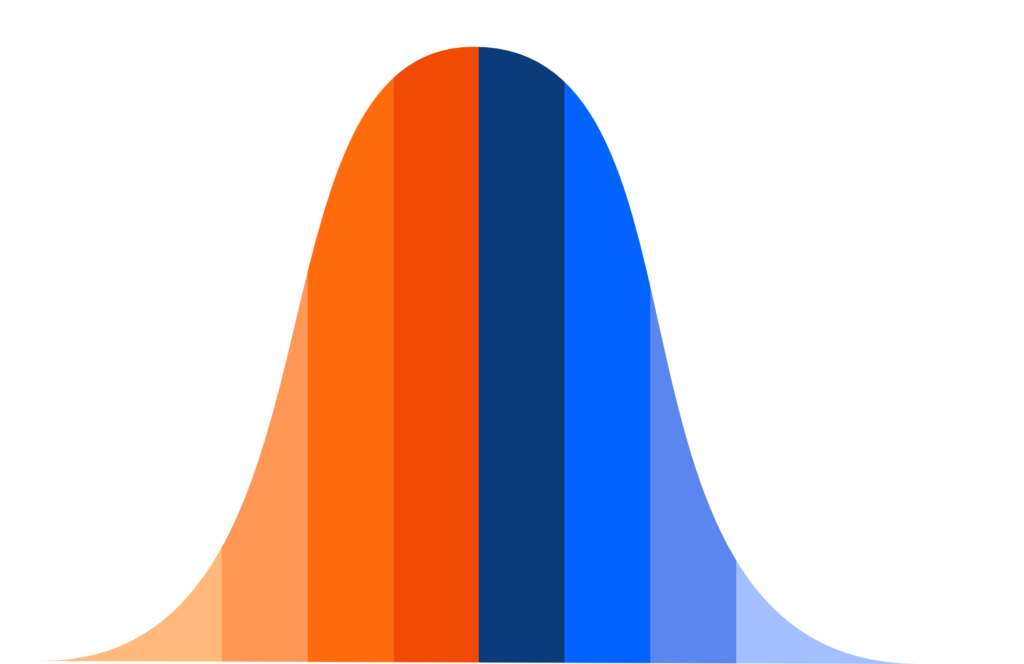Make Passive Income Selling Stock Options
As a Stock Investor you would like to discover ways to increase the returns on your Stock portfolio and maintain your investment strategy. First off, you must have an Investment Strategy and this can be implemented by using individual Stocks. For every position in your Investment Portfolio, including Cash, you must have an Investment Strategy. For individual Stocks you must define an investment strategy based on the valuation that you have assigned for a Stock.
Simply put this means;
what Stock would you like to own,
or why you continue to own a Stock,
or when you need to sell the Stock
This done by Writing or Selling an Options Contract. The Premium paid on the Stock Option is paid to you, as the Writer of the Contract. The Strategy can boost your returns literally with no risk, to your investment strategy using individual Stock Options.
So, let’s cut to the chase, how do you make money?
This done by Writing or Selling an Options Contract. The Premium paid on the Stock Option is paid to you the Contract Writer. The Premium or Price is quoted at the currency unit per individual stock and the number of Shares covered by the Contract. Typically 100 Shares.
As the Options Contract is issued, the Premium is the price paid by the Buyer of the Option. The Buyer has paid to have Rights as stated in the Option’s Contract. As the Option is traded, the price includes the Option Premium, because the Rights of the Option Contract have been transferred to a new holder of the Option.
An Option is issued out-of-the-money and the Option Premium has only an extrinsic or time value. The price of an in-the-money Option, will have both an intrinsic and an extrinsic value. This traded value is not paid to the writer of the Option Contract.
STOCK OPTIONS
OK, let’s go to the very basics of the Option Market and there are four possible positions using Options. Options can be either a Call or a Put and the two positions are either to Buy or Hold or Sell or Write an Option. There are two ways to trade Options either via an organised Exchange or via the Over the Counter market.
Let’s look at the two types of Options from the point of view of the Buyer of the Option. What do gain, when you Buy an Option, either a Put or a Call, obtain an opportunity or a Right, but not an obligation.
A Call Option gives the Buyer the opportunity or Rights to buy the underlying Stock. A Put Option gives the Buyer the opportunity or Rights to sell the underlying Stock.
The Option Seller has the obligation to fulfill the Rights when the Option is exercised, governed by a Contract. Every Stock Option has a Contract.
An Option Contract
An Option’s Contract is a financial arrangement between two parties. One being the Seller of to Option, the other being the Buyer of the Contract. The Contracts will have various clauses that define the various Rights of the Buyer and the Obligation of the Seller. Each Contract will define and establish standard features of the Option. These features will govern the Contract.
The key features of an Option’s Contract will define, the Stock, what type of Option are we interested in, what is the Price governing the Option, how long the Option will be in force, the style of Option and Settlement. The Black-Scholes model can be used to calculate the Premium or Price of the Option. Other parameters incorporated into the model are Interest Rates and Volatility.
Let’s look at all the individual parameters.
Underlying Stock:
The underlying Stock is the Security that the Option Contract is defined. Of course, in the broad Options Market, the underlying Security does not have to be a Security. The underlying could be a Stock Index, or another Index, Fixed Income securities, or a Commodity. Or an Exchange Rate between two currencies.
Option Type:
An Option can be either a Call Option or a Put Option. If you are the Buyer of a Call Option you have the right to buy the underlying Stock. The Buyer of a Put Option gives the right to sell the underlying Stock.
Strike Price:
The Strike Price is the Stock price at which the underlying Stock can be bought or sold if the option is exercised. This price is predetermined at the time the option contract is written.
Expiration Date:
The expiration date is the date on which the Option Contract expires. This will be the last day on which the Buyer can exercise their Rights. Post this date the Seller’s obligation, under the Option Contract is terminated.
Exercise style:
Options are defined into two main styles, one American style and the other European style. The distinction is determined by two distinct possibilities as to when the Option can be exercised. An American-style option can be exercised at any time on or before the expiration date. European-style options can only be exercised on the expiration date.
Settlement:
The settlement of a Stock Option is by cash or by the purchase of the Stock. A Stock Index Option is settled by cash.
MAKING MONEY BY SELLING OPTIONS
OK, so now we understand all the parameters that go into an Option’s Contract, then to value the option we use the model called the Black-Scholes. The Black-Scholes model considers five factors to determine the value, or premium for the Option. The five variables include the underlying Stock Price, the Option’s Strike Price, the time until the option expires, the risk-free interest rate, and the volatility of the underlying asset.
The Premium is how you will make money by selling Options is the price that the Buyer of an Option pays for the Option Contract. This price is determined by factors such as the current market price of the underlying asset, the strike price, the expiration date, and the volatility of the underlying asset.
The Black-Scholes model calculates the fair price of an Option based on these variables. This is the present value of the expected payoff at expiration discounted at the risk-free rate. The model assumes that the underlying asset’s price follows a log-normal distribution. Thus the rate at which it changes in a proportional to its current value.
A Covered Call Option
As the Seller of the Covered Call Option, requires that you must own or have access to the Stock. The idea is that as an investor you have determined by valuing the Stock, a Stock Price, if achieved, would be a Price at which you would Sell the position. Thus, your Sell Valuation corresponds to the Strike Price of the Option Contract. Therefore when you sell the Option, you receive the premium.
If the Stock Option is exercised, you are obliged to sell the Stock to the Holder or Buyer of the Option. This is what you were considering doing anyway. Or if the Strike Price is not achieved, you continue to hold the Stock and the Premium is the extra income.
A Covered Call Option is considered to be a conservative strategy. The risk in the strategy is reduced as the Seller has the Stock to sell. Yes, it could limit the potential upside if the Stock Price rises significantly.
Here is a practical guide to implementing a Covered Call Option Strategy.
Valuation of a Stock
This a Stock in your Portfolio that you have valued and would look to sell at a certain price, this becomes the Strike Price of the Call Option. Of course, the Strike Price must be above the current Stock Price. The price must not be excessively above, because there must be a market for your Call Option.
Obligation of the Seller
As the Seller of the Call Option, you are obligated to sell your Stock if the option is exercised. Thus, it is important to monitor the Stock’s Price as traded on the Exchange and the option to see the likelihood of the Call Option to be exercised. If at the Expiration Date, the Stock Price is below the Strike Price, the option expires worthless. You will keep the premium.
A Writing a Put Option
There is the saying in the Options Market.
The way to make money in Options is to Sell Puts
The process of writing a Put Option involves selling a put option contract to an investor. The investor could be invested in the Stock and has purchased the Right to Sell the Stock under the Put Option. The Rights will be exercised if the Stock Price falls below the Strike Price. Thus, the investor is using the Put Option as part of a Risk Management Strategy.
Here is a practical guide to Write a Put Option
To start select a stock within your investment universe that, based on your valuation for the Stock, set a Price Target where you will purchase the Stock. An understanding of the stock’s valuation is key. Other important issues include, the current trading range of the Stock, any upcoming events or news that could impact the stock’s price must be monitored. Combined then the Strike Price can be set.
The Expiration Date is set for the Put Option and the contract will expire on this date. The Holder will either exercise the Option or sell the stock to you. Or the contract expires worthless and as the writer of the Put Option, you keep the Premium.
The key is to have the Cash available to purchase Stock if exercised. The Broker may require that this is held in an account for the life of the Option. Thus, after selling or writing the Put Option there is the need to monitor the Stock’s Price and the Option Contract to determine if the investor will exercise the option. If the Stock Price falls below the Strike Price on or before expiration for an American Option, the Holder of the Option will sell the stock to you at the Strike Price.
THE OPTIONS MARKET, WHY IT WORKS
When an investor buys a Put Option, they are hedging the fact that the underlying Stock Price could fall below the Strike Price of the Put Option. If the Stock Price falls below the Strike Price, the investor can exercise the Put Option. This involves selling the stock at a Strike Price, above the future current market price for the Stock.
An Example – Put Option
An investor buys a Put Option on AAA stock with a $100 strike price and a three-month expiration date. If the stock price falls to $80 before the expiration date, the investor can exercise the option and sell the stock at $100. If the Stock Price remains above the strike price of $100, the option and allow it to expire worthless.
When an investor purchases a Call Option, they are essentially betting that the underlying stock’s price will rise above the option’s strike price before the expiration date. If the stock price rises above the Strike Price, the investor can exercise the option and purchase the stock at the lower strike price. The investor could then make a profit by selling the stock at a higher market price.
An Example – A Call Option
Now an investor buys a call option on YYY stock with a $100 strike price and a three-month expiration date. If the stock price rises to $120 before the option expires, the investor can exercise the option and purchase the stock at $100. This allows them to profit by selling the stock at the higher market price of $120.
Stock options are used as a form of compensation for employees, common in the Tech Industry. Options are traded on Exchanges and traders will either speculate on the future direction of a stock’s price or to hedge against potential losses in their Stock portfolio.
An Option Contract designed to the requirements of the Holder, will be traded Over-the-Counter (OTC). An Exchange Traded Option has a contract which has standard conditions for a number of parameters, for example for volume and expiration date. The Option can then be traded on the Exchange.
THE GREEKS
The Greeks are measures for the sensitivity of the Option’s price to various parameters, such as volatility or the price of the underlying asset. Used to analyse an Options Portfolio and the sensitivity of an Option. In this way investors adjust hedge positions and to manage risk.
The Option Greeks are Delta, Gamma, Vega, Theta, and Rho.
Remember their roles and sensitivities by this table.
Name Dependent Variable Independent Variable
Delta Option price Value of underlying asset
Gamma Delta Value of underlying asset
Vega Option price Volatility
Theta Option price Time to maturity
Rho Option price Interest Rate
Delta
Option Delta is a measure of the sensitivity of an Option’s price to changes in the underlying Stock Price and the amount by which the Option’s price will change. Delta ranges from 0 to 1 for a call option and from -1 to 0 for a put option. A Delta of 0 indicates that the Option’s Price will not change in response to changes in the Stock Price. A delta of 1 indicates that the Call Option in in the money and the Option Price will move in lockstep with the underlying asset’s price. Clearly, -1 for a Put Option.
Gamma
Gamma (Γ) is a measure of the delta’s change relative to the changes in the price of the underlying asset. If the price of the underlying asset increases by $1, the option’s delta will change by the Gamma amount. The main application of Gamma is the assessment of the Option’s Delta.
Vega
Vega (ν) is an Option Greek that measures the sensitivity of an option price relative to the volatility of the underlying asset. If the volatility of the underlying asses increases by 1%, the option price will change by the Vega amount. The Vega is a monetary amount not a decimal number. An increase in Vega generally corresponds to an increase in the Option’s value equally for both Calls and Puts.
Theta
Theta (θ) is a measure of the sensitivity of the option price relative to the option’s time to maturity. If the option’s time to maturity decreases by one day, the option’s price will change by the Theta amount. Theta is the time decay, it is mostly a negative value.
Rho
Rho (ρ) measures the sensitivity of the option price relative to interest rates. If a benchmark interest rate increases by 1%, the option price will change by the Rho amount. Rho is the least significant of the option Greeks. The price of an Option is not as sensitive to interest rate changes as compared to changes in other parameters.









2 Responses
I needs to spend some time learning more or understanding more.
Hi,
Sorry, not to come back to you sooner. The strategy is to basically lock in some income via selling either puts or call. Regarding Put there is a famous saying that the prole who make money in options sell Puts. In particular in 2023, 2022 was another case. The idea you must have is to look at stock you would like to own, pick a valuation entry point and sell the Put on that basis. Regarding selling calls it is a stock that you own and there is a valuation point (price) that you would like to sell the stock.
W